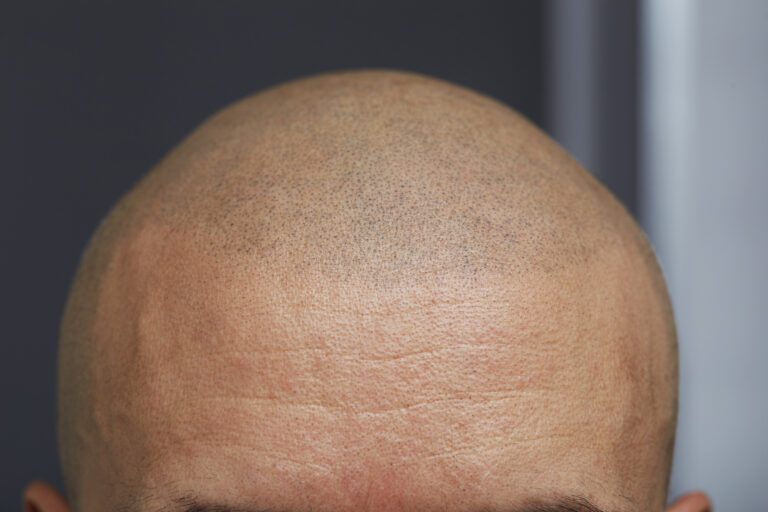Wearing Hats After Hair Transplant? How to Hide Your Surgery Safely
After your FUT (Follicular Unit Transplant) or FUE (Follicular Unit Extraction) procedure, it’s second nature to hide the evidence of the surgery. By now, you’re probably asking questions like:
How to cover head after hair transplant? Can you wear a hat after hair transplant?
The answer is yes, you can wear a hat 10–14 days after a hair transplant procedure. However, only use loose-fitting hats like bucket hats and fishing hats. Gently place the hat over your head and avoid letting the fabric touch the implanted grafts to avert any damage.
In this article, we’ll answer the common questions about how and when you can wear a hat after a hair transplant. We’ll also share the best tips on how to hide post-op hair transplant evidence so that others won’t know you had one done.
Let’s get into it!
When Can I Wear a Hat After Hair Transplant?
Experts don’t recommend wearing a hat in the first two weeks of hair transplantation. It may displace or compress the grafts and disturb the healing process.
However, if you have to, your surgeon may allow you to wear a loose, structured hat 10 days after the operation.
When Can I Wear a Baseball Hat After FUE?
Although the punctured holes in FUE are small and easy to heal, it’s not advisable to wear a baseball hat in the first few weeks. A baseball hat is tight and can tug the transplanted hair.
To avoid the risk of compressing or damaging the grafts, allow enough time for follicular units to anchor in the bald areas permanently. Often, it takes 10 days, but your surgeon may suggest you wait 4 weeks before wearing a baseball cap.
What Are the Best Hats to Use After Hair Transplant?
You should choose loose, adjustable, and wide hats after a hair transplant. Here are a few of the most recommended hats:
- Bucket hat
- Fishing hat
- Loose cowboy hat
How to Cover Head After Hair Transplant?
Covering hair is crucial for every patient who has undergone a hair transplant. Not only does it hide the redness, scabbing, or swelling in the transplanted areas, but it also protects your scalp from direct sunlight and pollutants.
We advise that you ask your surgeon about the right way to cover your head. Your scalp is still sensitive, so be careful when wearing and removing the hat.
Here’s our simple guide on how to cover your head after a hair transplant:
- Choose a loose-fitting hat or headgear, such as a bucket hat or loose bandana.
- Avoid using tight headwear, such as beanies and helmets, especially in the first few weeks of the hair transplant procedure.
- Use both your hands when wearing the hat and make sure the fabric doesn’t touch the grafts.
What Are the Precautionary Measures When Using Headgear After a Hair Transplant?
Here are the things you should keep in mind when using a cover to hide your hair:
- Avoid letting the hat touch the transplanted hair when you put it on and take it off.
- Don’t use knit hats, winter hats, or anything made of cotton as the follicular units may get stuck on them.
- Don’t use helmets or any tight gear for at least a month after a hair transplant.
- Wear a hat only when needed and don’t let it sit on your head for too long.
Tips on How to Hide a Hair Transplant Surgery Safely
Aside from the struggle of the hair transplant procedure, hiding the evidence of hair transplantation is also a stressful thing.
Hence, for your peace of mind, you can follow these tips we prepared for you:
Tip #1: Wear Hats Before and After the Hair Transplant Procedure
Whether you have to go to work or hang out with your friends, the best way to hide the traces of hair transplant surgery is to cover your head with a hat. Loose, structured hats like bucket hats and fishing hats can cover the haircut or any redness and scab on your head.
However, people around you will question why you’re covering your head and will want to see if you’re hiding something from them.
Hence, you should wear a hat weeks before your surgery. The moment they ask about it, you can show off your head and tell them you’re trying a new look.
Eventually, they’ll get used to it. By the time you need to cover the evidence of hair transplant surgery, they won’t suspect you’re hiding it under your hat.
Tip #2: Shorten Your Hair a Few Weeks Before the Surgery
Cut your hair at least 2 weeks before the surgery so your friends will get accustomed to seeing you with a short or buzz haircut.
When you go back to work, they’ll see little to no difference. Thus, you won’t worry about people suspecting you did something in your head.
Tip #3: Change Your Facial Hair
Grow a beard or mustache on your face before your surgery. Then, shave it a day before you go back to work.
The sudden change in your facial feature will serve as a distraction. It’ll direct your colleagues’ attention to your face than to your head, leaving them oblivious to the procedure your hair has gone through.
Tip #4: Use Concealer to Hide Traces of Surgery
Concealers can help hide the evidence of surgery. Using DermMatch, for example, will make your hair look thick and full since it can match your hair color on the bald areas. It won’t block the hair follicles, so it’s safe to use after the scabs come off.
However, always consult your doctor before using any concealer or cosmetics so that they can guide you in the right direction.
Tip #5: Have Your Surgery Before the Hair Loss Gets Worse
Hair transplantation provides a long-lasting solution to baldness. To prevent people from wondering how you battled hair loss, don’t let them see or know you’re experiencing it.
Follow any of the tips we’ve provided above and schedule a hair transplantation immediately.
Wrap-Up: Can You Wear a Hat After Hair Transplant?
Yes, your surgeon will allow you to wear loose-fitting headgear like bucket hats, fishing caps, and bandanas. However, start wearing it at least 10 days after the hair transplant procedure.
By then, the grafts have fully settled on the scalp, and you can safely wear a loose hat.







